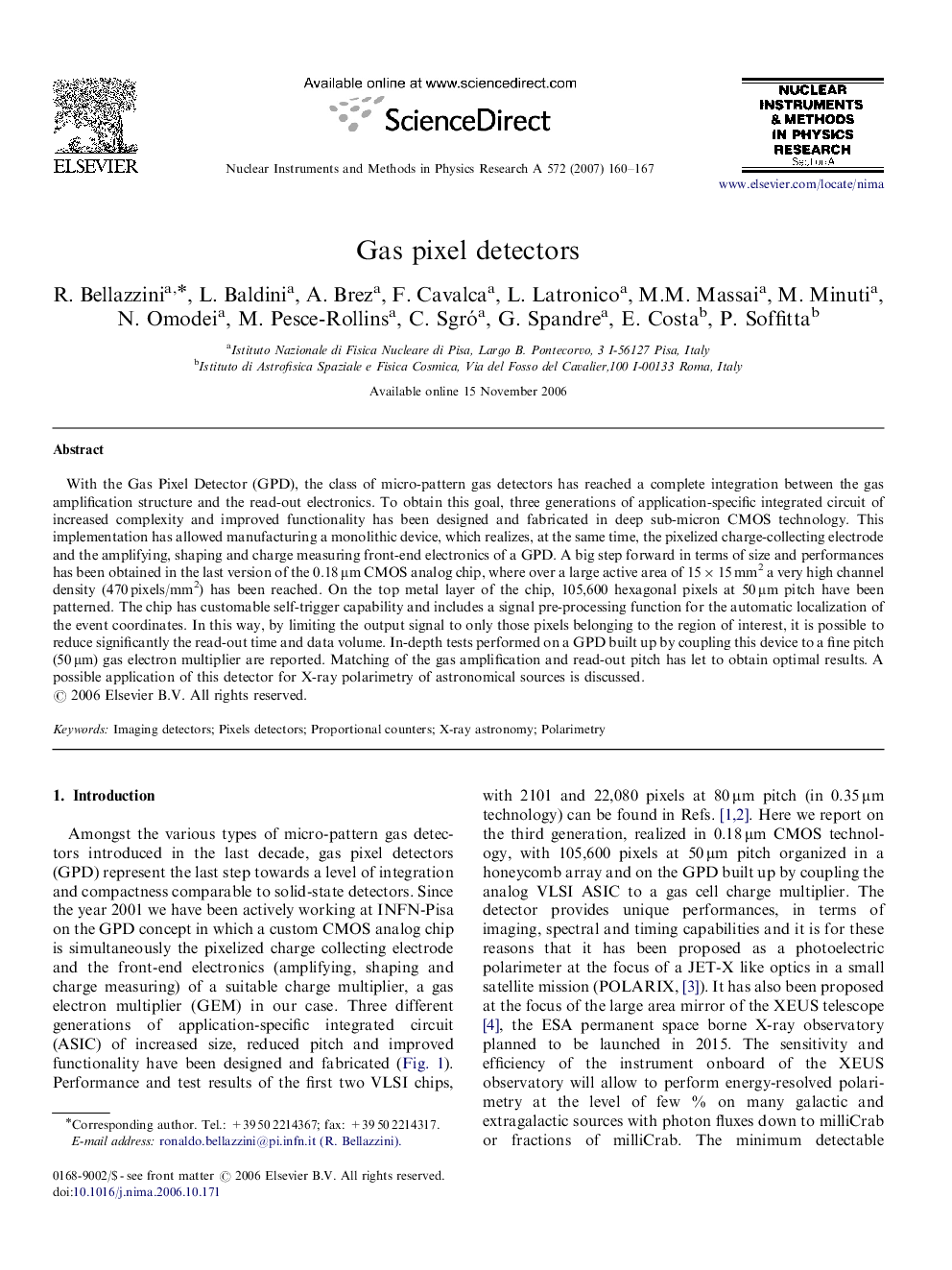| Article ID | Journal | Published Year | Pages | File Type |
|---|---|---|---|---|
| 1831900 | Nuclear Instruments and Methods in Physics Research Section A: Accelerators, Spectrometers, Detectors and Associated Equipment | 2007 | 8 Pages |
With the Gas Pixel Detector (GPD), the class of micro-pattern gas detectors has reached a complete integration between the gas amplification structure and the read-out electronics. To obtain this goal, three generations of application-specific integrated circuit of increased complexity and improved functionality has been designed and fabricated in deep sub-micron CMOS technology. This implementation has allowed manufacturing a monolithic device, which realizes, at the same time, the pixelized charge-collecting electrode and the amplifying, shaping and charge measuring front-end electronics of a GPD. A big step forward in terms of size and performances has been obtained in the last version of the 0.18 μm CMOS analog chip, where over a large active area of 15×15 mm2 a very high channel density (470 pixels/mm2) has been reached. On the top metal layer of the chip, 105,600 hexagonal pixels at 50 μm pitch have been patterned. The chip has customable self-trigger capability and includes a signal pre-processing function for the automatic localization of the event coordinates. In this way, by limiting the output signal to only those pixels belonging to the region of interest, it is possible to reduce significantly the read-out time and data volume. In-depth tests performed on a GPD built up by coupling this device to a fine pitch (50 μm) gas electron multiplier are reported. Matching of the gas amplification and read-out pitch has let to obtain optimal results. A possible application of this detector for X-ray polarimetry of astronomical sources is discussed.
